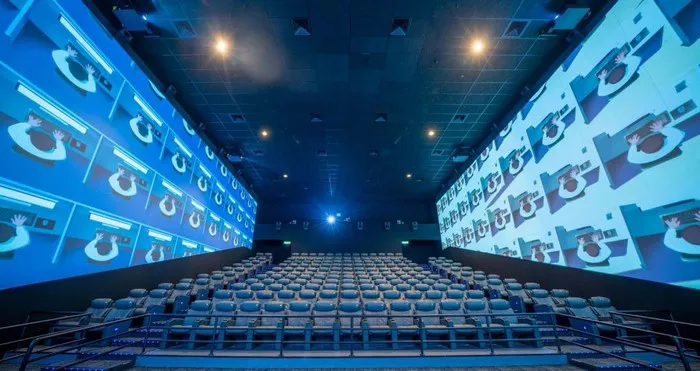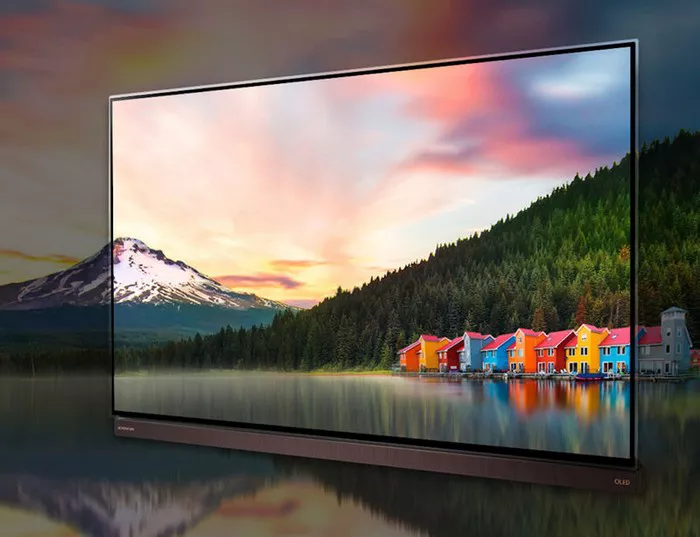In an era where digital technologies continually push the boundaries of storytelling and entertainment, the traditional movie theater experience has undergone remarkable evolution. Among the latest innovations in cinema is ScreenX, a cutting-edge format that expands the dimensions of the movie-watching experience beyond the confines of a conventional screen. With its immersive multi-projection system, ScreenX not only envelops audiences in panoramic visuals but also redefines the very essence of storytelling within the cinematic realm.
Origins and Evolution
ScreenX emerged from the fertile ground of South Korea’s CJ Group, a conglomerate with significant interests in entertainment and media. Conceived in the early 2010s, ScreenX evolved from CJ Group’s desire to transcend the limitations of traditional movie formats and create an immersive cinematic experience that captivates audiences on a whole new level.
The development of ScreenX was fueled by advancements in digital projection technology, enabling the seamless integration of multiple screens within a single auditorium. Unlike conventional cinema formats that rely on a single screen for projection, ScreenX leverages a proprietary system that synchronizes multiple projectors to create a panoramic canvas that envelops viewers in a 270-degree field of view.
Technological Marvel: How ScreenX Works
At the heart of ScreenX lies a sophisticated multi-projection system that orchestrates the seamless integration of multiple screens to create a panoramic viewing environment. Here’s a breakdown of the key components and technological processes that make ScreenX possible:
1. Projection Mapping: ScreenX employs advanced projection mapping techniques to precisely align and blend images across multiple screens. By mapping the geometry of each screen surface, the system ensures that visuals seamlessly transition from one screen to another, maintaining immersion for the audience.
2. Content Adaptation: Filmmakers working with ScreenX must adapt their content to suit the panoramic format. This involves meticulous planning and composition to ensure that action and visual elements remain coherent and engaging across the expanded viewing space.
3. Immersive Sound: In conjunction with panoramic visuals, ScreenX theaters often incorporate immersive sound systems to further enhance the viewer experience. Surround sound technology envelops audiences in a rich audio landscape, complementing the expansive visuals and fostering a heightened sense of immersion.
4. Audience Engagement: ScreenX isn’t just about passive viewing; it’s about active participation. The panoramic format encourages viewers to engage with the entire visual space, immersing themselves in the cinematic world from every angle. This interactive dimension adds a new layer of engagement to the movie-watching experience, fostering deeper connections between audiences and the narrative unfolding on screen.
Expanding Horizons: Applications and Impact
Since its inception, ScreenX has made waves in the global cinema landscape, offering audiences a fresh perspective on storytelling and visual immersion. Beyond traditional movie screenings, ScreenX has found applications in various domains, including:
1. Blockbuster Films: Major Hollywood studios have embraced ScreenX as a premier format for showcasing their blockbuster releases. From superhero epics to high-octane action flicks, ScreenX offers filmmakers a canvas to amplify spectacle and deliver unparalleled cinematic experiences to audiences worldwide.
2. Immersive Attractions: Beyond traditional cinema, ScreenX has also found a home in immersive attractions and theme park experiences. With its ability to transport viewers to dynamic and immersive worlds, ScreenX lends itself well to interactive exhibits, virtual reality installations, and themed entertainment experiences.
3. Educational Content: In educational settings, ScreenX has the potential to revolutionize the way students engage with visual media. By leveraging its immersive capabilities, educators can create captivating learning experiences that transport students to historical events, scientific phenomena, and cultural landmarks, fostering deeper understanding and retention of course material.
4. Live Events: ScreenX isn’t limited to pre-recorded content; it’s also a platform for live events and performances. From concerts to sporting events, ScreenX theaters can transform into immersive arenas where audiences feel like they’re front and center, immersed in the action unfolding before them.
Challenges and Future Directions
Despite its many strengths, ScreenX isn’t without its challenges and limitations. Adapting content to suit the panoramic format requires careful consideration and may pose creative constraints for filmmakers accustomed to traditional framing techniques. Additionally, the infrastructure required to support ScreenX theaters can be cost-prohibitive, limiting its widespread adoption in smaller markets.
Looking ahead, the future of ScreenX holds promise and potential for further innovation. As technology continues to evolve, we can expect enhancements in projection quality, immersive audio capabilities, and content creation tools tailored specifically for the panoramic format. Moreover, as audiences increasingly crave immersive experiences that transcend the boundaries of traditional cinema, ScreenX stands poised to lead the charge in redefining the cinematic landscape for years to come.
Conclusion
ScreenX represents a bold leap forward in the evolution of cinematic storytelling and audience engagement. With its immersive multi-projection system and expansive visual canvas, ScreenX offers filmmakers a new frontier to explore and audiences a transformative movie-watching experience unlike any other. As the entertainment industry continues to embrace innovation and experimentation, ScreenX stands as a shining example of the boundless possibilities that lie at the intersection of technology and storytelling.

























